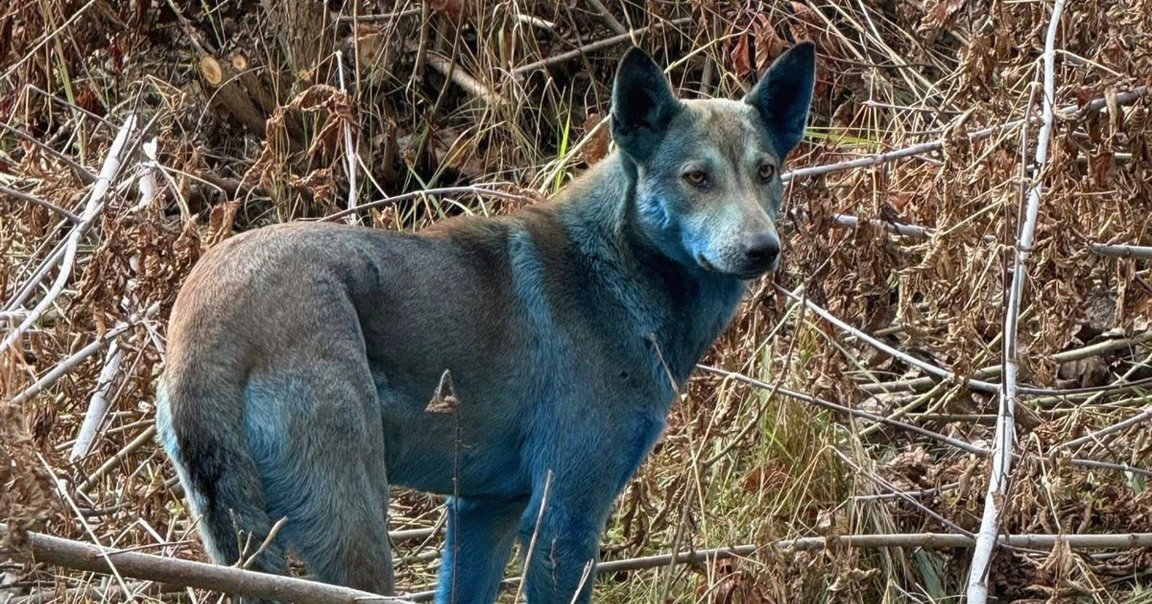
Researchers studying stray dogs inside the Chernobyl Exclusion Zone, the area surrounding the nuclear power plant that partially melted down in 1986, recently made a puzzling discovery: at least three dogs that had mysteriously turned blue.
Fortunately, as IFLScience reports, the canines almost certainly weren’t suffering side effects of radiation exposure. Instead, according to the researchers, there could be a far more mundane — and perhaps amusing — explanation.
“They appear to have been rolling in a substance that had accumulated on their fur,” Dogs of Chernobyl veterinary medical director Jennifer Betz told IFLScience. “We are suspecting that this substance was from an old portable toilet that was in the same location as the dogs; however, we were unable to positively confirm our suspicions.”
“We are not in any way saying that it is related to radiation in Chernobyl,” she added.
Portable toilets often use blue liquid that contains biocides, dye, detergents, and an odor-neutralizing additive to keep them fresh. Fortunately, even if the dogs did roll around in or even ingest the blue substance, they likely didn’t sustain any harm.
“The dogs appear healthy, as do all of the other dogs that we have encountered during our time in Chernobyl,” Betz told IFLScience. “I would suspect, as long as they don’t lick the majority of the substance off of their fur, it would be mostly harmless.”
The Dogs of Chernobyl initiative is a nonprofit that monitors and sterilizes the offspring of pets that once called the area their home decades ago to keep the population of semi-feral animals under control. Since 2017, it has sterilized more than 1,000 cats and dogs.
The initiative is part of the Clean Futures Fund, which was created to raise “awareness and provides international support for communities affected by industrial accidents and long-term remedial activities.”
In a post on Instagram last week, the fund had to dispel myths that it had been posting manipulated photos of blue dogs, saying that “we don’t have time to be doing things like that.”
The Chernobyl Exclusion Zone has become home to a whole host of species that are thriving in the area thanks to the almost complete absence of humans for almost 40 years, including grey wolves, brown bears, and wild boars.
While it’s highly unlikely the dogs turned blue because of radiation, researchers did recently find evidence that local Eastern tree frogs had rapidly evolved to have more melanin to withstand the heightened and prolonged radiation from the disaster — turning them from a more typical forest green to pitch black.
Oddly enough, it’s not the first time we’ve come across reports of dogs turning blue in the area. In early 2021, baffling pictures of bright blue dogs in an industrial city near Nizhny Novgorod, Russia, made rounds on social media. Officials suspected at the time that the dogs had rolled around in a toxic industrial chemical, such as copper sulfate, that could’ve caused the unusual color change.
Fortunately, a nearby veterinarian had the blue dogs tested and confirmed they were in good health. The widespread media attention even got two of them adopted on the spot.
More on blue dogs: Blue Dogs Discovered Near Abandoned Chemical Plant